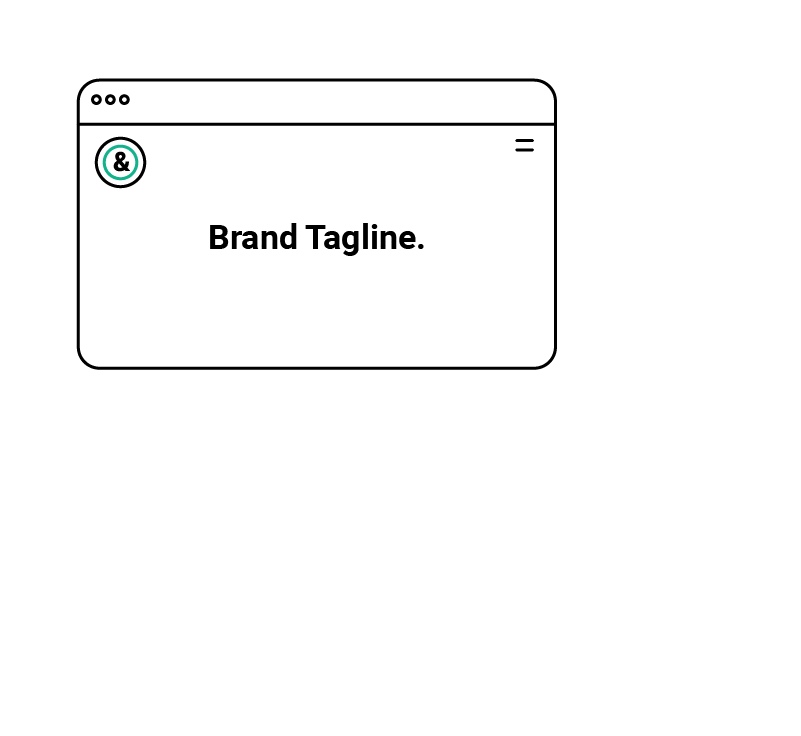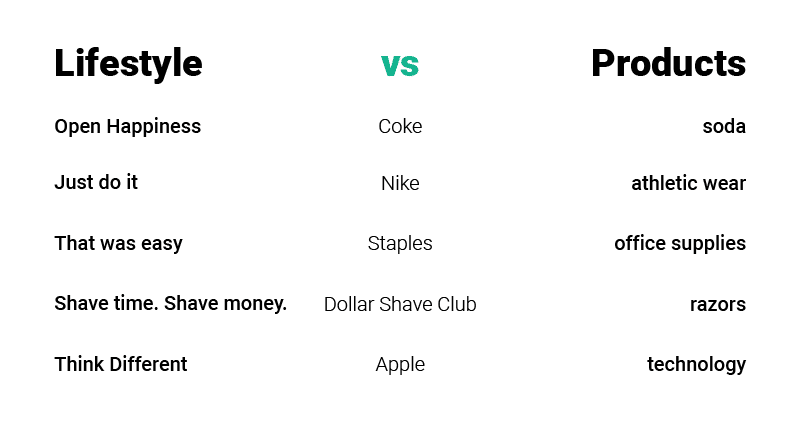Introduction
It seems like more and more companies are rebranding and developing their brand image. They are updating their logo to something more sleek and integrating engaging language into the content they publish. A clear example of this is GoDaddy transitioning away from its raunchy past and becoming more sophisticated while keeping some of its playfulness. But why? Why are companies switching their attention to their brand? Differentiation has become difficult in recent years with consumers being oversaturated. Business is now taking a less intrusive approach by bolstering their brands to engage with customers on a more personal level.
What’s the difference between branding and sales?
Business terms like sales, marketing, advertising, and branding are easily confused. All of these terms represent tools that generate revenue. However, each serves specific purposes that fit into a company’s strategy. The two that we are going to focus on are sales and branding.
What is Sales?
Many people feel like there is a level of trickery when it comes to a salesperson selling a product. You can probably think back to a time where you felt swindled by a salesperson or business. Contrary to this feeling, sales itself is not inherently sketchy. Sales is the set of actions that lead to a sale. It can be made up of marketing efforts, advertisements, and even branding.

Sales stripped down to its core purpose, however, can set off people’s red flags. When the entire goal of sales is to convert as many customers as possible, it loses its ability to relate to the customer. If an advertising campaign is reliant on generic clickbait messaging, it may generate clicks but it will not build customer loyalty. This type of sales is evident whenever you are watching local television. Those ads that beg you to act now, often lack the personal touch that can come from a well-branded company.
What is Branding?
For the most part, people either know or at least have heard of the phrase “branding”. They know what brands they like and the ones that they don’t. What’s a little more unclear is what makes a brand effective. Branding is the accumulation of the visuals, messaging, and general tone a company embodies. Branding is much bigger than just a company’s logo. It is the full experience a consumer has with a company from the moment they are made aware of it.
The consumer’s experience is built on messaging. As humans, we show our personality through what we say and the tone in which we say it. Companies are the same. The language a brand uses gives the consumer an intimate window into the values and mission of the company. Messaging represents the personality of a brand as seen on the company’s social media, website, brick and mortar stores – among other places.
Great messaging can only go so far without visuals to support it. The logo is just the tip of the iceberg when it comes to brand visuals. Through the use of imagery, colors, and design elements, a brand can evoke emotion and build a visual association with the company. Visual branding will give a brand’s messaging the impact necessary to build customer loyalty.

When branding is at its best, it should be evident in all interactions a customer has with a company. This can include everything from the colors of the website, the grid on Instagram, to the signage used in the brick and mortar stores. Great branding gives the consumer an experience to remember and to interact with in a consistent manner.
How does branding affect sales?
Consumers have grown tired of traditional advertising. Now when we see commercials, rather than being interested in the product, we actually pay to hide ads (ex. Hulu + No Ads subscription). People see, on average, 5,000 ads a day. The age of traditional sales is over. The age of the influencer is here. People are now far more likely to try a new product if it is recommended by a trusted friend. So rather than barraging consumers with more ads, companies are turning to more personalized solutions.
Building a brand to create a community will engage new customers and over time will increase customer loyalty. 82% of adults say that they hold brand loyalty to specific brands. We love to rally behind something. Great brands give people something to rally behind. This is evident in the dividing battle between Coke and Pepsi. It is also why sporting events are so popular. People love to gather around a shared interest. Branding is about gaining fans. Fans will share with their friends and families what they love about your company. This has an immeasurable effect on profits. A modern business’s goal should be to gain fans, not just to convert new leads.
Does this mean you should ignore all advertising and marketing efforts? No. Branding and marketing live symbiotically. In a rom-com, the two leads will have a meet-cute that leads to a relationship. In the world of business, marketing is the meet-cute and branding builds the relationship.
Does my business have to be big for this to work?
Can you generate fans if your business is small? Of course. Branding is equally important for a small business as it is for a large one. Having loyal customers is key to any business’s success. No matter the size of your business, your customers are the same people who are making purchases from companies like Target, Home Depot, and Apple. Everyone likes to have a personal experience with a brand, whether it is a big box store or a mom and pop shop.
An important piece of branding is building a brand that can act dynamically as you scale. A great brand can remain mostly the same at any size. This means that the core of your company does not change as you expand. Customers look for companies that can scale and maintain their roots.
Branding best practices
A great brand will attract fans through the story they tell. Your brand should represent who you are, what you do, and how that impacts your customer. People are far more likely to remember a story they are told than a statistic. Impactful storytellers don’t just talk about themselves, they appeal to their audience and give them something to take away from the experience. Your brand’s story allows you to engage your customers and convince them of the value you provide. There are many ways to achieve this, but here are some brand storytelling best practices:
Focus on a lifestyle, not products
Plenty of companies are claiming they make the best of whatever product they sell. It is hard to know which of these claims have any weight behind them. Instead of being product-focused, great brands will represent a lifestyle while their products are the means to live a certain lifestyle. Keen, an outdoor footwear company, does this in the mission statement: “We are committed to putting our values in motion. From the products we make, to the actions we take, we inspire ourselves and others to live and work monumental every day.” They are selling a lifestyle of doing good and experiencing the outdoors. Their shoes are the tools to achieve that.

Be authentic
We live in a world full of fake news. People have now trained themselves, for the most part, to sniff out BS. This is the case with politicians, celebrities, and brands. Anything that does not align with what a company claims to be their values will set off people’s BS alarms. To avoid that, be upfront and don’t try to make your brand something that it is not. People value transparency and hate feeling like they have been lied to. If you want to gain fans, make sure you are authentic and honest in everything you do.
Understand your ideal customer
Knowing your audience will guide how you appeal to them. In the world of mass production, people are hungry for personalized experiences. They want products that uniquely fit their needs. By understanding your ideal customer, you can center your brand around serving their needs while building trust. To gain a better understanding of your customers, create a buyer persona. A buyer persona lays out the customer’s demographics, behaviors, values, and needs. Keeping the buyer in mind while building your brand will help you tailor it to their needs.
5 Simple tips & tricks
Be Consistent
Once you build your brand, stick to it. Since the impact of branding is difficult to measure, it can be easy to lose steam when implementing a brand. If you want your customers to be consistent, your brand needs to be consistent too. Building a loyal customer base relies on a brand remaining strong after the test of time. A consistent brand will maintain brand visuals and messaging on all platforms. For your brand to be impactful, it needs to be consistent on your website, social media, signage, and throughout the brick and mortar store.
Do your research
Research inspiring brands, both in your industry and out of it. Study what makes their brand engaging and how they are using it to gain fans. Your brand will not stand alone. The consumer interacts with countless brands daily. Having a clear picture of the other brands that are out there is out there will help you build a brand that stands out.
In addition to researching other brands, research your customer. Look at common trends among your customer base. Do your customers spend a lot of time on Instagram? Do they value time with family? Do they invest a lot in the hobbies they enjoy? Knowing these types of things about your customers will help you personalize your brand to their needs.
Create a unique personality
With thousands of companies vying for your customer’s attention, it is important to stand out. Creating a brand with personality is a great way to do that. Your brand’s personality will come out in the tone, messaging, and imagery it uses. The more relatable the personality, the more engaged people will be. In some industries, this is easier than others. A trendy clothing store’s personality can be sarcastic, while a law firm should be professional and maintain empathy. A brand’s personality will reflect the culture of the company and the people who work there.
Understand what you are not
Standing out is important, but being true to the core of your company is the priority of branding. Creating a brand is as much about what you are as it is about what you are not. Ikea is a sells trendy furniture at a reasonable price. Ikea is not a luxury furniture store. Their brand reflects both of these truths. If Ikea’s brand represented a luxury furniture store and a buyer bought something that was made out of low quality materials, Ikea wouldn’t be as successful. When someone goes to Ikea and buys a coffee table, they know what they are getting themselves into. Ikea’s brand experience is tailored for people who are looking to furnish their homes with trendy, inexpensive furniture. Ikea knows what it’s not. Your company needs to too.
Focus on a niche
Reaching as many new eyes as possible is not the purpose of a good brand. That is what traditional sales is about. Modern consumers don’t want to be sold to, they want to make a buying decision based on their needs. Building your brand to fulfill those needs means focusing on a niche customer. Focusing on a niche will make it easier to refine your brand for the customers that are most likely to become fans.
The bottom line
The purpose of a brand is to convert customers into fans. Fans act as personal brand ambassadors to their friends and family, creating more conversions than traditional sales. In the age of advertising over-saturation, businesses are beginning to place traditional sales on the back-burner while developing their brand into something worth standing behind. Ideally, marketing/sales efforts should act as a matchmaker for your customers and your brand. Once introduced, the brand will take over and nurture the customer’s relationship with your company. The more refined a brand is, the less the company has to rely on traditional marketing efforts, which, in turn, saves money and increases sales.

Sources
https://www.nutshell.com/blog/7-principles-of-branding-for-sales/
https://medium.com/swlh/sales-vs-branding-in-60-seconds-cfa47a91a322
https://www.entrepreneur.com/article/229304
https://medium.com/swlh/how-to-sell-something-bigger-than-your-otherwise-boring-business-b08d12666252
https://www.keenfootwear.com/our-purpose.html
https://neilpatel.com/blog/does-branding-drive-sales/
https://www.entrepreneur.com/article/313369
https://www.linkedin.com/pulse/have-we-reached-peak-ad-social-media-ryan-holmes/
https://www.youtube.com/watch?v=qEHL8eLJCkc
https://www.youtube.com/watch?v=HHht5-8jtgI
https://blog.hubspot.com/marketing/brand-slogans-and-taglines
